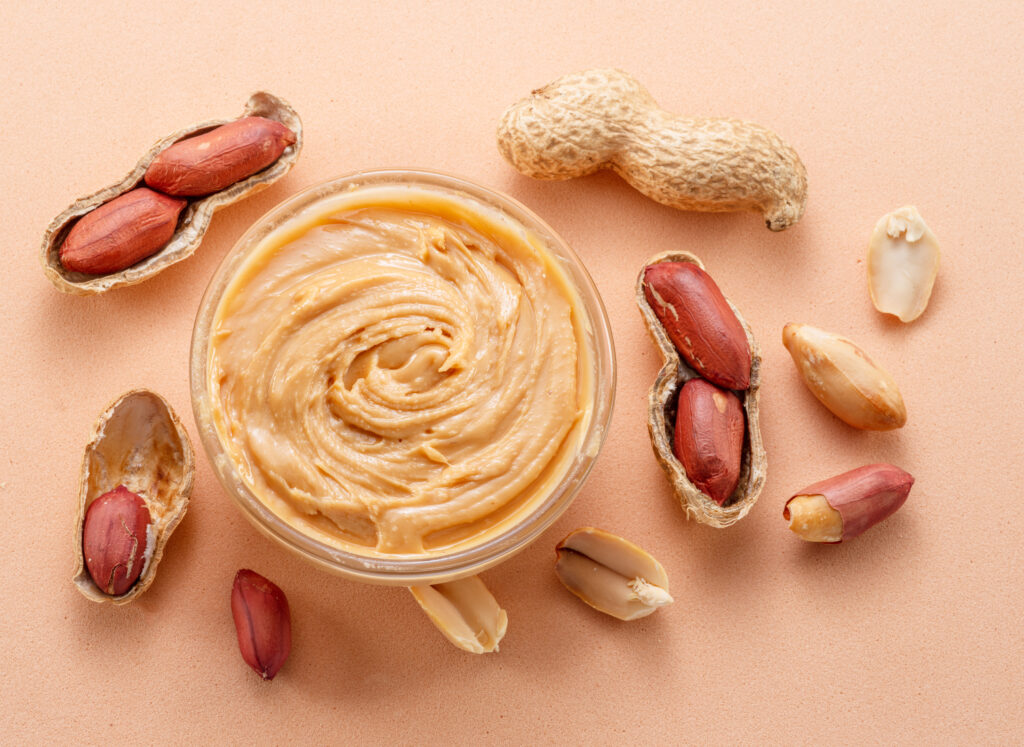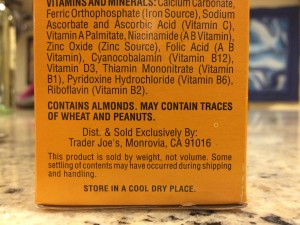- Early signs of an allergic reaction are rash, hives, and itchiness.
- Anaphylaxis is a serious and life-threatening allergic reaction.
- If you’re allergic to peanuts or tree nuts, have an emergency action plan and always carry an epinephrine auto-injector (EAI) prescribed by your health care provider. Available EAI brands include Epipen®, Adrenaclick® and generic equivalents, and Auvi-Q®. Click here for instructions for using an EpiPen®. Click here for instructions on using an Auvi-Q®.

Peanut allergy is more common than ever before; its prevalence has tripled in the past ten years. One in thirteen children living in the United States has a diagnosed peanut allergy. Peanut allergy usually starts by age 2 years, with 75% of allergic reactions happening the first time a child has peanuts. Approximately 20% of people with peanut allergies can have a life-threatening reaction when they eat peanuts. If you are allergic to peanuts or nuts, you should always carry an Epinephrine Auto Injector (EAI) prescribed by your health care provider and a smart phone.
What causes allergies to foods such as peanuts?
When a person has peanut allergy, the body’s immune system reacts to one or more of the proteins found in peanuts, triggering the release of histamine and other chemicals; the action of these substances on skin and other organs causes allergy symptoms. Children at risk for peanut allergy often have other allergic conditions such as other food allergies, asthma, eczema, or hay fever, and can have relatives with allergic conditions as well.
Can I be tested for peanut allergy?
If your health care provider thinks you should be tested for peanut allergy based on your history, you may have a skin test, blood test, or both. The skin test involves pricking a drop of peanut extract on your skin and watching for a reaction. The blood test checks for a protein called Ig-E specific for peanut protein.
If I have a peanut allergy, can I eat other nuts?
Peanuts are vegetables, coming from plants that grow in the ground; tree nuts are the seeds of fruits that come from trees. As such, peanuts are classified differently from tree nuts (almonds, walnuts, cashews, etc.). Approximately 35% of people with peanut allergies also have allergic reactions to tree nuts. However, if you are already able to eat tree nuts without a reaction, then you don’t have allergies to those nuts you are already eating and testing for those nuts is not necessary!
Why do peanut allergies get special attention?
Peanuts and tree nuts are the most common causes of severe life-threatening allergic reactions. Every year, hundreds of deaths are caused by allergic reactions to peanuts and nuts, even with best efforts to avoid exposure. Very small amounts of peanuts can cause reactions, although most symptoms are caused by the equivalent of one peanut kernel or more.
Because of the many ways a person can be exposed to peanuts, it takes careful planning to maintain a peanut-safe environment for people who are allergic.
What are the most common symptoms of peanut allergy?
Common signs of an allergic reaction to peanuts, which can range from mild to severe, are:
- Hives/itchy rash
- Coughing/wheezing, shortness of breath, difficulty breathing
- Runny nose/watery eyes
- Tingling of the lips/mouth
- Tightening of the throat
- Stomach pain/nausea/vomiting/diarrhea
- Dizziness, feeling faint, passing out
What is anaphylaxis?
The most serious reaction to a peanut allergy is called anaphylaxis (an-uh-fa-lak-sis).
Anaphylaxis is a life-threatening allergic reaction. Anaphylaxis happens suddenly and involves dangerous changes to your breathing, heart rate, and other body functions. Anaphylaxis usually happens within seconds to minutes of exposure to an allergen and is life threatening without emergency medical treatment.
If you or someone you know experiences anaphylaxis after coming in contact with a peanut product, use an Epinephrine Auto Injector (EAI) prescribed by your health care provider and call 911 right away! Because anaphylaxis to peanuts is unpredictable and life threatening, if you have a peanut allergy you must always carry your EAI and smart phone with you.
How can I plan ahead?
If you have peanut allergy, you should have a written treatment plan ready in case of an allergic reaction and make sure your teachers, camp counselors, friends (and others you may be with) know what to do in the case of an emergency. If you will be flying in an airplane, it is also important to tell the flight attendant about your allergy because you could potentially react to another passenger’s peanut-containing food. Anyone with peanut allergies or their parents should carry their EAI and be prepared to use it.
Have the EAI with you at all times; it can save your life! Make sure to keep track of the expiration date and replace when expired.
How do I know if a food has peanuts in it?
Some foods (such as peanut butter, mixed nuts, and some candy bars) are obvious sources of peanuts and tree nuts, but some foods that contain trace amounts of peanuts aren’t as easy to spot. Peanuts may be found in baked goods, crackers, sauces, pesto, Asian foods, veggie burgers, nougat, chocolate, ice cream, cereal, granola, Worcestershire sauce, bouillon, and more. Since 2006, federal law requires all packaged foods have labeling of any of the eight most common food allergens: peanuts, tree nuts, milk, egg, wheat, soy, fish, and shellfish contained in that food item. Therefore, the label of any packaged food should indicate whether it contains peanuts and tree nuts. A food label listing allergens looks like this:

You must always check that a food is safe by carefully examining the Allergen Content Label or the ingredient list. Unfortunately, restaurant foods, foods sold at a bakery or ice cream shop, and foods prepared by other people don’t have labels. Avoid eating items that are unlabeled or that you have no information about. Whenever you are eating at a restaurant, be sure to tell the wait staff that you have food allergies and that none of the items you order can have peanuts or nuts. Also be aware that exposures can be caused by cross-contact, such as using the same knife to cut a peanut butter sandwich and then your tuna fish sandwich, or using the same ice cream scoop that has been contaminated with pistachio or maple walnut ice cream for your plain vanilla ice cream.
Some product labels state that the food “may contain traces of nuts” or is “manufactured in a facility that also processes nuts.” This means that the food may have been exposed to nuts during the manufacturing process. For example, items can become contaminated while in contact with shared equipment such as a conveyor belt. Talk with your doctor about whether or not it is safe for you to eat packaged foods with these advisory warning labels.
Can you outgrow a peanut allergy?
Most people with peanut allergy have the allergy for life, but studies show 20% can resolve peanut allergy with time. If some time has passed since your last allergic reaction, your allergist may repeat peanut allergy testing and if it is negative, you may be eligible for a food challenge. A food challenge is performed by an allergist in an office or hospital, and consists of medically supervised administration of small, increasing amounts of peanuts until a normal dose is tolerated. If no symptoms appear, that person’s peanut allergy is resolved and he or she can start eating peanuts. A food challenge should ALWAYS be done with a health care provider (HCP) present; it’s never safe to do a food challenge at home.
What is the treatment for peanut allergy?
There is presently no cure for peanut allergy. However, recent research has developed a treatment known as oral immunotherapy (OIT), in which small, measured doses of peanut protein consumed in increasing amounts following a timed protocol can desensitize the peanut-allergic individual to the equivalent of two peanuts, which is the usual amount of peanut in a typical accidental exposure. Taking a daily dose will continue the patient’s desensitized state. The desensitized patient would be able to tolerate an accidental exposure without experiencing severe reactions or anaphylaxis. The FDA approved a commercial product for peanut OIT in January 2020. It is important to know that peanut OIT does not cure peanut allergy; patients need to maintain the same avoidance diet for peanuts without change, and maintain the same management strategies including ready access to the EAI. Other areas of research that are promising for the future include allergen skin patches and vaccines. Be optimistic that scientific research will pave the way for additional options for treatment and even a cure in the future!
 Young Men's Health
Young Men's Health

